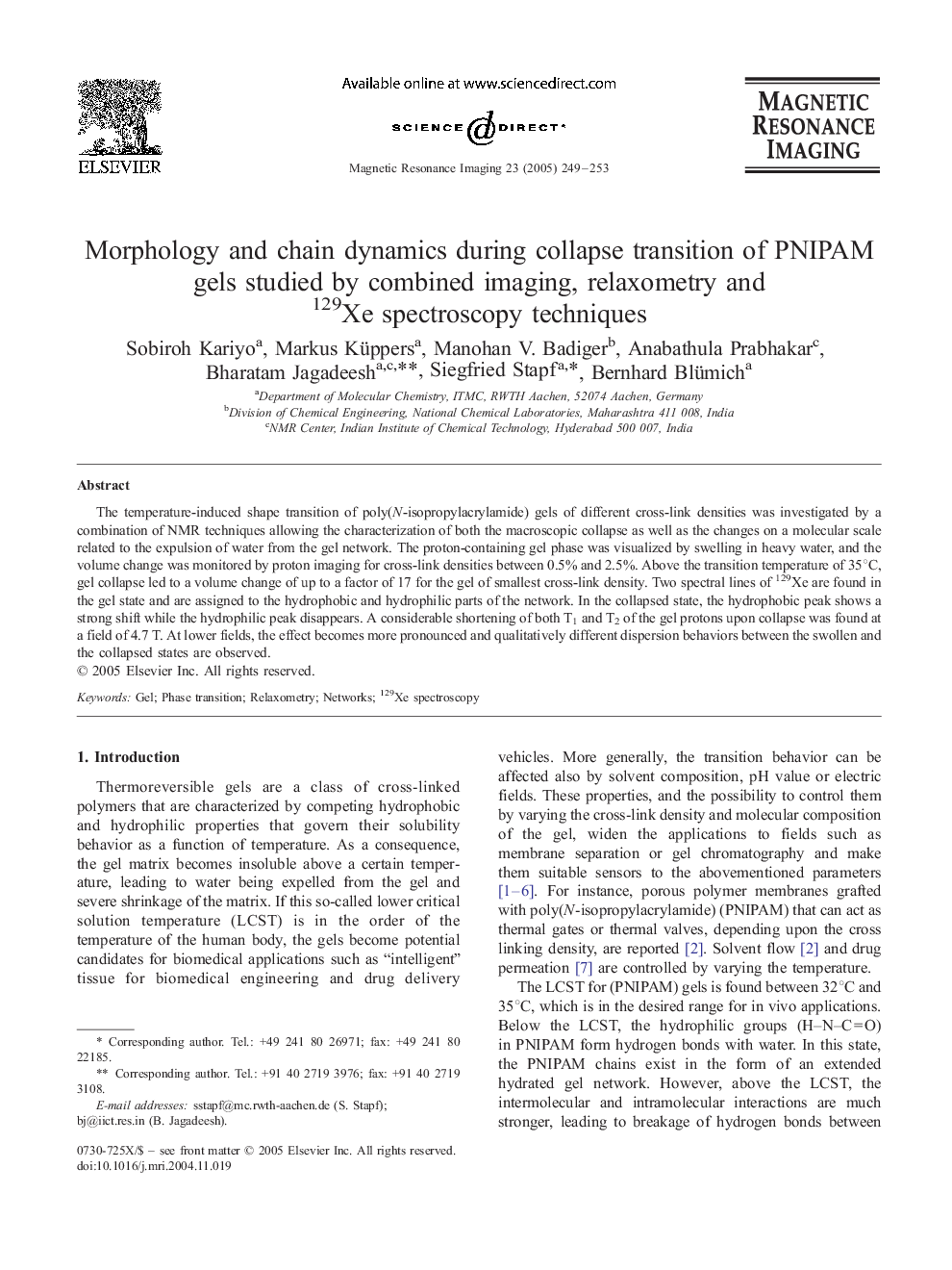| Article ID | Journal | Published Year | Pages | File Type |
|---|---|---|---|---|
| 10712979 | Magnetic Resonance Imaging | 2005 | 5 Pages |
Abstract
The temperature-induced shape transition of poly(N-isopropylacrylamide) gels of different cross-link densities was investigated by a combination of NMR techniques allowing the characterization of both the macroscopic collapse as well as the changes on a molecular scale related to the expulsion of water from the gel network. The proton-containing gel phase was visualized by swelling in heavy water, and the volume change was monitored by proton imaging for cross-link densities between 0.5% and 2.5%. Above the transition temperature of 35°C, gel collapse led to a volume change of up to a factor of 17 for the gel of smallest cross-link density. Two spectral lines of 129Xe are found in the gel state and are assigned to the hydrophobic and hydrophilic parts of the network. In the collapsed state, the hydrophobic peak shows a strong shift while the hydrophilic peak disappears. A considerable shortening of both T1 and T2 of the gel protons upon collapse was found at a field of 4.7 T. At lower fields, the effect becomes more pronounced and qualitatively different dispersion behaviors between the swollen and the collapsed states are observed.
Related Topics
Physical Sciences and Engineering
Physics and Astronomy
Condensed Matter Physics
Authors
Sobiroh Kariyo, Markus Küppers, Manohan V. Badiger, Anabathula Prabhakar, Bharatam Jagadeesh, Siegfried Stapf, Bernhard Blümich,
